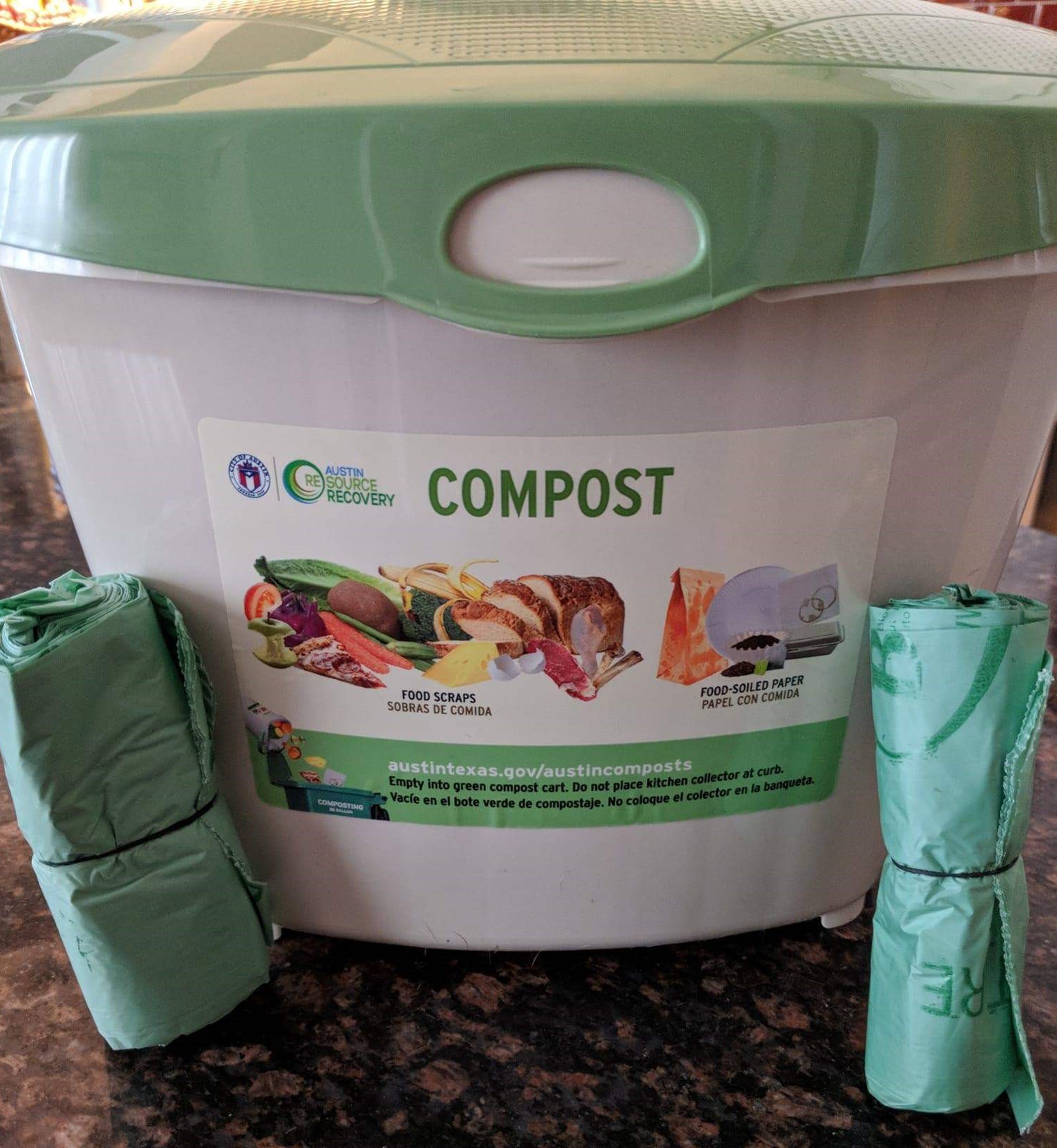Per Austin Resource Recovery’s 2018 Compost Audit Report, the top 5 contaminants in the City of Austin’s curbside compost collection are:
1) Recyclables (glass, plastics, tin/aluminum, cardboard)
2) Clothes/Textiles
3) Styrofoam
4) Treated Wood
5) Trash
The entire Compostable Material Composition Audit is available here. This is the revised report clarifying cardboard’s original listing as a contaminant. It no longer is. Please see the explanation for the original classification below.
Please make sure if you use bags, they are BPI-certified compostable bags. These will be white or green and have the BPI certification logo on them.
A Quick How To Guide for composting and recycling, What Goes In? is available here.
The explanation for the original “cardboard is contamination” classification is as follows:
“A few weeks ago I [ARR] shared the 2018 Compost Audit Report with you all [Zero Waste Block Leaders], recognizing the low contamination rate and the items that we consider to be contaminants.
from Facebook post to Zero Waste Block Leaders by Austin’s Captain Can March 28, 2019
That report originally listed cardboard under the recycling category, to mean recyclables that are contaminating the compost. It was brought to the attention of our Quality Assurance team that we educate our customers to see cardboard as a compostable material and not a contaminant.
“Initially, we understood (clean) paper and cardboard were designated as recycling and soiled paper and cardboard were designated as compost. On the first day of the audit, we had a large amount of unsoiled moving boxes and based on the collateral, we categorized it as recycling. However, we revisited the categorization, clarified that Organics by Gosh can process the amount of unsoiled cardboard we witnessed and came to the same conclusion that it should not be listed as a contaminate.”
